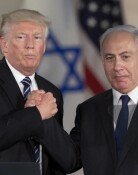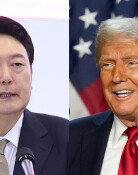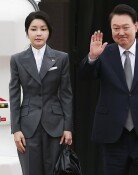Parts for imported cars in Korea far more costly than abroad
Parts for imported cars in Korea far more costly than abroad
Posted December. 09, 2011 01:06,
The BMW 750Li sedan skidded in the rain in August last year while running on a curved road, resulting in its front end and lower body damaged.
The owner of the car went to a service station for repairs and was surprised at the huge repair bill of 41 million won (36,400 U.S. dollars) for parts and labor. After paying for the repairs with insurance, the owner eventually sold the car.
After the effectuation of Korea`s free trade agreement with the European Union, imported car dealers cut the prices of their cars sold in Korea to expand their market share in the Korean car market, but repair costs of imported cars remain high.
High parts prices are blamed for high repair costs. Certain parts for imported cars are dozens of times more expensive than those for Korean cars.
○ Lower prices for new cars but raise prices for parts
According to the price lists of replacement parts for major Korean and foreign cars obtained by The Dong-A Ilbo from major carmakers and car parts producers Wednesday, the rear window of the Mercedes-Benz S-Class goes for 2.38 million won (2,110 dollars), 42 times higher than the rear window of the luxury sedan Hyundai Equus, which is in the same class in body and engine sizes.
The price of a windscreen for the Benz was 1.96 million won (1,740 dollars) and that for the Korean car was 1.12 million won (995 dollars). Considering the small difference between the prices of new Korean and foreign cars, such gaps in parts prices are significant.
Other imported cars are no exception. The prices of parts for European luxury brands such as Mercedes, BMW and Audi are four to five times higher than those for Korean cars in the same class.
Responding to such price differences, foreign carmakers claim logistics costs, tariffs and distribution expenses added in the process of parts imports lead to the price gap, adding those with deep pockets consider this when buying imported cars.
Industry experts have a different opinion, however. Imported car dealers are raising profits by selling replacement car parts at high prices for 100,000 units sold every year and a combined 600,000 cars running in Korea while cutting the prices of new cars.
According to a report obtained by Rep. Kwon Taek-gi of the ruling Grand National Party from the Korea Insurance Development Institute, the prices of parts for imported cars sold in Korea are 40 percent to 240 percent higher on average than those sold in the countries where the cars are manufactured. The air conditioner fan for the Audi A6 was sold for 265,000 won (235 dollars) in Germany but for 643,000 won (571 dollars) in Korea.
An institute source said, "The prices of car parts for imported cars are high due to the non-transparent and monopolistic distribution structure," adding, "Foreign carmakers are raking in excessive profits even if tariffs and distribution costs are considered."
○ Rise in insurance, fall in price of used cars
Higher parts prices result in a rise in repair fees and insurance premiums. According to an analysis by the institute on the repair costs that 11 Korean insurance companies paid, the repair costs for imported cars were 5.4 times higher than those for Korean cars in 2009.
The claim paid by insurers last year, when sales of imported cars began soaring, for imported car repairs grew 32 percent to 600 billion won (533 million dollars). The labor cost was 21,000 to 24,000 won (19 to 21 dollars) per hour for Korean cars and 42,000 to 63,000 won (37 to 56 dollars) for imported cars.
The prices of used imported cars are low due to such high repair costs. Yim Min-gyeong, a manager at the secondhand car dealer SK&Car, said, "The price of a large imported car drops to less than 50 percent three years after being released."
The repair costs of imported cars are high as official domestic dealers unilaterally set the prices of car parts and supply them only to official service stations. In addition, it is hard to use cheap compatible parts because the official service stations are forced to exclusively use original parts. This is why repair costs for imported cars vary among stations.
Lee Hang-gu, a senior researcher at the Korea Institute for Industrial Economics and Trade, said, "Imported car dealers are focusing on growth in quantity through sales the expansion," adding, "To expand their market share over the long term, they should actively resolve matters in after-sales services such as high repair costs."
gene@donga.com






